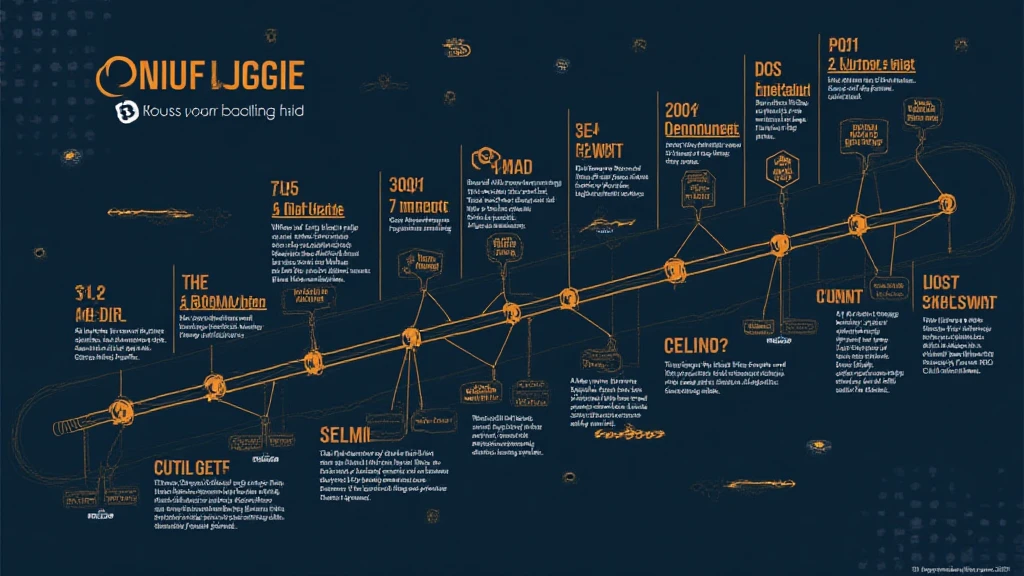The Bitcoin Blockchain Upgrade Timeline: What You Need to Know
Introduction
In the ever-evolving world of cryptocurrencies, upgrades to blockchain technology play a crucial role. With a staggering $4.1 billion lost to DeFi hacks in 2024, the importance of enhancements in security and efficiency cannot be overstated. As Bitcoin continues to dominate the market, understanding its blockchain upgrade timeline is essential for investors, developers, and enthusiasts alike. In this comprehensive guide, we will outline the key upgrades to the Bitcoin blockchain, their implications, and what they mean for the future of digital currencies.
Understanding Bitcoin Blockchain Architecture
Before diving into the upgrade timeline, it’s essential to grasp how Bitcoin’s blockchain operates. Bitcoin’s underlying technology is based on a peer-to-peer network that leverages a decentralized ledger. This architecture ensures transparency and security, yet it presents several challenges that necessitate upgrades.
The blockchain can be compared to a digital safe deposit box—like a bank vault for your assets. Just as financial institutions improve security measures to protect customer funds, Bitcoin’s blockchain undergoes enhancements to optimize performance and fortify security.

Key Components of Bitcoin’s Blockchain
- Decentralization: No single entity controls the network.
- Consensus Mechanism: Bitcoin uses Proof of Work (PoW) for transaction validation.
- Security: Cryptographic hashing ensures data integrity.
- Transparency: All transactions are publicly recorded.
The Bitcoin Upgrade Timeline
Tracking the history of upgrades within the Bitcoin network helps us understand how it has adapted over the years. Here’s a detailed timeline of significant upgrades:
1. Genesis Block (2009)
The Bitcoin journey began with the creation of the genesis block by Satoshi Nakamoto on January 3, 2009.
2. The First Upgrade: Bitcoin Improvement Proposal (BIP) 34 (2013)
BIP 34 introduced a new consensus rule that required the block height to be included in the coinbase transaction. This upgrade improved the efficiency of validating blocks.
3. Segregated Witness (SegWit) (2017)
SegWit, implemented in August 2017, was one of the most groundbreaking upgrades. It aimed to alleviate transaction malleability and increase the Bitcoin block size limit:
- Transaction Malleability: SegWit allows for the separation of transaction signatures from transaction data.
- Scalability: This upgrade paved the way for the Lightning Network, enhancing transaction speed and reducing costs.
4. Taproot (2021)
Introduced in November 2021, Taproot built upon the foundation laid by SegWit, providing users with more privacy by allowing complex transactions to appear as simple ones on the blockchain. Its main features include:
- Improved Privacy: Users enjoy greater confidentiality in their transactions.
- Smart Contracts: Taproot enhances the usability and functionality of smart contracts on Bitcoin.
5. The Future: Upgrades on the Horizon
The Bitcoin community is continually discussing potential future upgrades to address network efficiency, security, and scalability. Ongoing debates revolve around the introduction of features like Schnorr signatures and further enhancements to Layer 2 solutions.
Impacts of Upgrades on Bitcoin Adoption in Vietnam
As Bitcoin upgrades occur, it’s important to understand their implications, especially in rapidly emerging markets like Vietnam. The local cryptocurrency market has seen significant growth:
- Vietnam’s cryptocurrency user growth rate is approximately 65% annually.
- Local investors are increasingly adopting Bitcoin as a hedge against inflation.
With each upgrade, the Bitcoin ecosystem becomes more robust, encouraging further adoption among Vietnamese users and businesses.
Closing Thoughts
Understanding the Bitcoin blockchain upgrade timeline is crucial for grasping the evolution and future trajectory of this digital currency. Upholding security and scalability while fostering innovation is the pathway forward. As we look toward the future, we can expect that the continuous enhancements in Bitcoin technology will maintain its position as a market leader.
If you are a cryptocurrency enthusiast or investor, staying informed about upgrades like SegWit and Taproot will equip you with the knowledge needed to navigate the complex landscape of digital assets. After all, being aware of these changes can help you make more informed investment decisions. For more insightful articles on cryptocurrency trends and market analysis, be sure to check out coinsvaluechecker.
Author: Dr. John D. Kelly, a noted expert in blockchain technology with over 15 published papers in the field, has led prominent audits for major digital asset projects.


